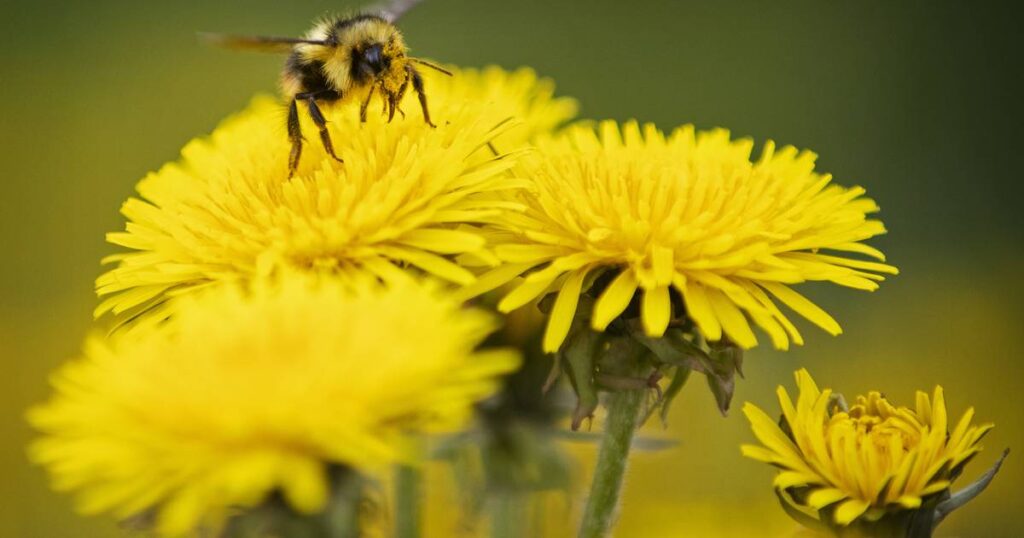![]()
Some people worry that extraterrestrials will invade Earth in the future. However, it looks like an alien invasion is already happening: Dandelions! Dandelions are more ubiquitous than ever this summer.
The most prolific flowering plant in the dandelion genus has undoubtedly earned a bad reputation over the years and has been labeled a “weed,” according to some. However, dandelions are also widely known for their edible and medicinal properties.
The name dandelion comes from the French “dandelion” (lion's teeth) due to the jagged edges of its leaves. The leaves can be eaten in salads or dried for tea. The dandelion taproot is edible and the yellow flowers can be battered and fried. And, of course, there's dandelion wine.
Dandelion is known to be an antioxidant that fights harmful free radicals, reduces inflammation, and boosts the immune system. It may also be effective in treating kidney disease.
Dandelions are one of the first plants to flower in summer and are therefore considered important plants for honeybees, but I have stood in large fields of dandelions for years and never seen a single honeybee. I rarely pass a lupine or wild geranium flower without seeing a bee buzzing about.
Bears are known to eat dandelions, and a recent bear sighting at Eagle River Nature Center confirmed this.
In fact, I have been fighting dandelions for years. While I acknowledge their aforementioned benefits, I feel somewhat guilty about my aggression. In fact, dandelions are the Rodney Dangerfield of the plant world, getting very little respect. They grow in gravel and even penetrate cracks in concrete. I have seen dandelion taproots grow 8 to 9 inches long. Each dandelion plant produces about 10 flowers. A single plant can produce up to 2,000 seeds, growing exponentially. And the plant can live for more than 10 years.
And this invasion has reached far and wide. On our hikes through the Alaskan backcountry, from Lost Lake on the Kenai Peninsula to Crow Pass, deep in the Eagle River Valley, south of Eklutna Lake, we never saw a dandelion. But about 15 years ago, the “dandies” seemed to start expanding their range. Around that time, the U.S. Forest Service began installing boot brushes at hiking entrances to stop hikers from carrying dandelion seeds into the wild. Dogs' paws also carry seeds. Clearly, wind isn't the only thing that transports dandelion seeds long distances.
I don't like using chemicals anywhere, but especially on my lawn. Recently, while I was trying to track down a dandelion on my lawn, I thought I heard it whispering to me in a mocking, threatening tone: “You're so stupid you can get rid of us! For every one you pull out of the ground, there will be 20 more!”
And I'm starting to think they're right. Dandelions are rampant in my neighborhood, along the Glen, Seward and Parks highways, and now all the way back home. I once cut off a neighbor's dandelions to try to stop them from getting into my yard, and he got pretty pissed.
As the first rays of morning sunlight stream into the garden, little yellow flowers pop out defiantly to say, ‘Hello, here I am!’ If you start to think your flowers are talking, you know there’s something wrong.
Maybe the dandelions would respect me more if I left the roots alone and harvested the leaves for a salad. Why complain when there's wine?
Frank E. Baker is a freelance writer who lives in Eagle River, Alaska, and has lived in Alaska all his life.
Opinions expressed here are those of the author and are not necessarily endorsed by the Anchorage Daily News, which welcomes a wide range of viewpoints. To submit an article for consideration, email commentary(at)adn.com. Submissions of under 200 words may be sent to letters@adn.com or click here to submit from any web browser. Read our complete guidelines for letters and commentary here.



